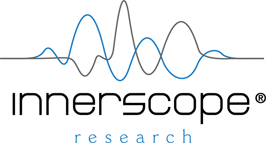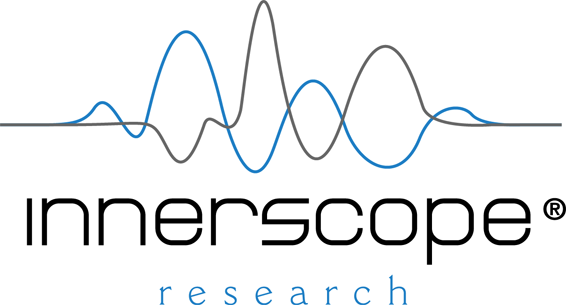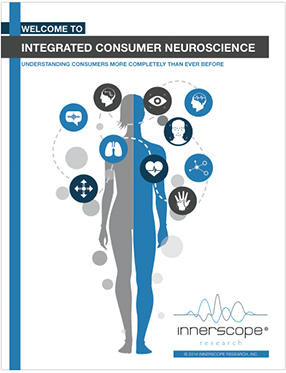In Part I of this blog series, we learned that we empathize and emotionally connect with others even when we don’t know it. Our brains are wired to make us emotional beings through our mirror neuron system. The mirror neuron system activates when we try to understand one another, and that’s why your brain reacts in a similar way when you are experiencing an emotion and when you see a friend experiencing that emotion. In Part II, Dr. Carl Marci puts biometrics to the test as he measures how people engage with media across generations.
Interestingly, it’s this type of unconscious, observational empathy that comes into play when we engage with media. When we’re watching something on the TV, our mirror neuron system is on all the time – we can’t turn it off! Does that mean that we connect to media in the same way that we connect to each other? Dr. Marci measures this with the use of Innerscope’s biometric belt, which measures skin conductivity, heart rate, respiration and motion. Often combined with eye tracking and facial coding, these biometric tools provide a powerful lens into the unconscious engagements we are all forming all the time with media and marketing messages.
Consider a typical male that enjoys media. He likes bigger screens and in-depth connections with his programs. The more engaged he becomes, the more the emotional areas in his brain are firing. This is considered immersive engagement. In immersive engagement, someone else is the producer and director of the experience and the viewer is following their journey.
This same male, though, still wants to make choices and have control – whether through channel changing or social media. While emotion is still important, he is also activating the goal-directed, top-down processing centers in his brain. This is considered flexible engagement, where he becomes the producer and director of his own experience, the captain of his own ship.
Immersive and flexible engagement is on a continuum, where things like 3D IMAX screens and HDTV are on the immersive side of the spectrum, while the internet and smartphones and other interactive devices are on the flexible side of the spectrum. Innerscope’s goal? To help its clients increase emotional response to all experiences in order to break through the modern media clutter and engage audiences to the fullest extent.
In order to achieve this goal, Dr. Marci needed to better understand audiences of all types. Working with Time Warner Inc., he and the Innerscope team compared digital natives, those who have grown up in the digital world (such as Millennials), versus digital immigrants, those who have only been introduced to the digital world later in life (such as Baby Boomers). While wearing biometric belts and adorning point-of-view cameras, each group was monitored continuously in their home while consuming a wide variety of media. Dr. Marci and the team was specifically interested in measuring the amount of time spent in consuming different types of media, a comparison of the amount of attention of both groups to media platforms, and the emotional consequences of consuming different types of media.
Both digital natives and digital immigrants spent about 10 hours of their day consuming different media platforms, both digital (such as the internet and smartphones) as well as non-digital (such as television and magazines). True to their name, the digital natives spent a higher proportion of their time with digital media. For example, digital natives spent almost equal time between non-digital and digital media, while the digital immigrants spent more time (68% of their time) with non-digital media. Digital immigrants displayed a fairly high rate of attention-switching, shifting from one platform to another 17 times per hour. Strikingly, though, digital natives displayed 27 shifts per hour, exhibiting a 35% increase in attention-switching behavior than their immigrant counterparts. The emotional engagement of each group was even more telling. Perhaps not surprisingly, digital natives tended to engage in double platform media consumption, with two screens in front of them. Digital immigrants, however, tended to stick to a single platform. While both groups experienced varying high and low emotional engagement, the digital immigrants experienced significantly higher ‘highs,’ and lower ‘lows’. Displaying less intense highs and lows, digital natives exhibited a compression of emotional response. In fact, the digital natives self reported that they felt more easily bored, distracted, and nervous than the digital immigrants self reported.
So what can we take away from this all? First, it’s clear that people spend a lot of time with media, although in the case of digital natives, an increasing proportion of that time is spent in a digital world and almost nothing deserves their full attention. The emotional consequences here are strong, showing that attention shifting constrains emotional engagement and limits the potential emotional pay-off of an experience. But if you can capture the attention of a digital native, the rewards can be big as their connected ways mean amplification of your message.
Dr. Marci has some recommendations that speak to the emotional and empathic side of media. As communicators, the point needs to be made quickly. This provides instant gratification to the viewer and jump-starts that emotional intensity. Information and media should also be easy to consume, enlisting the help of multiple access points and platforms with visual call outs. Above all, though, emotion needs to be put at the center of any communication. Engagement with relevant stories and relatable characters increases emotional connection to the content. Upbeat music and surprising twists also help capture and hold attention.
The connection formed between consumers and media spans much deeper than conscious perception suggests. It is a connection that is rooted in our brains, measured in our physiology, and displayed in our everyday lives. It is a connection that Dr. Marci is pretty, well, connected to.
Read the white paper: A Biometric Day In The Life - A Cross-Generational Comparison of Media Platforms
Watch the teaser video: Sneak Peek: First-Ever (Biometric) Day in the Life Study



Leave A Comment